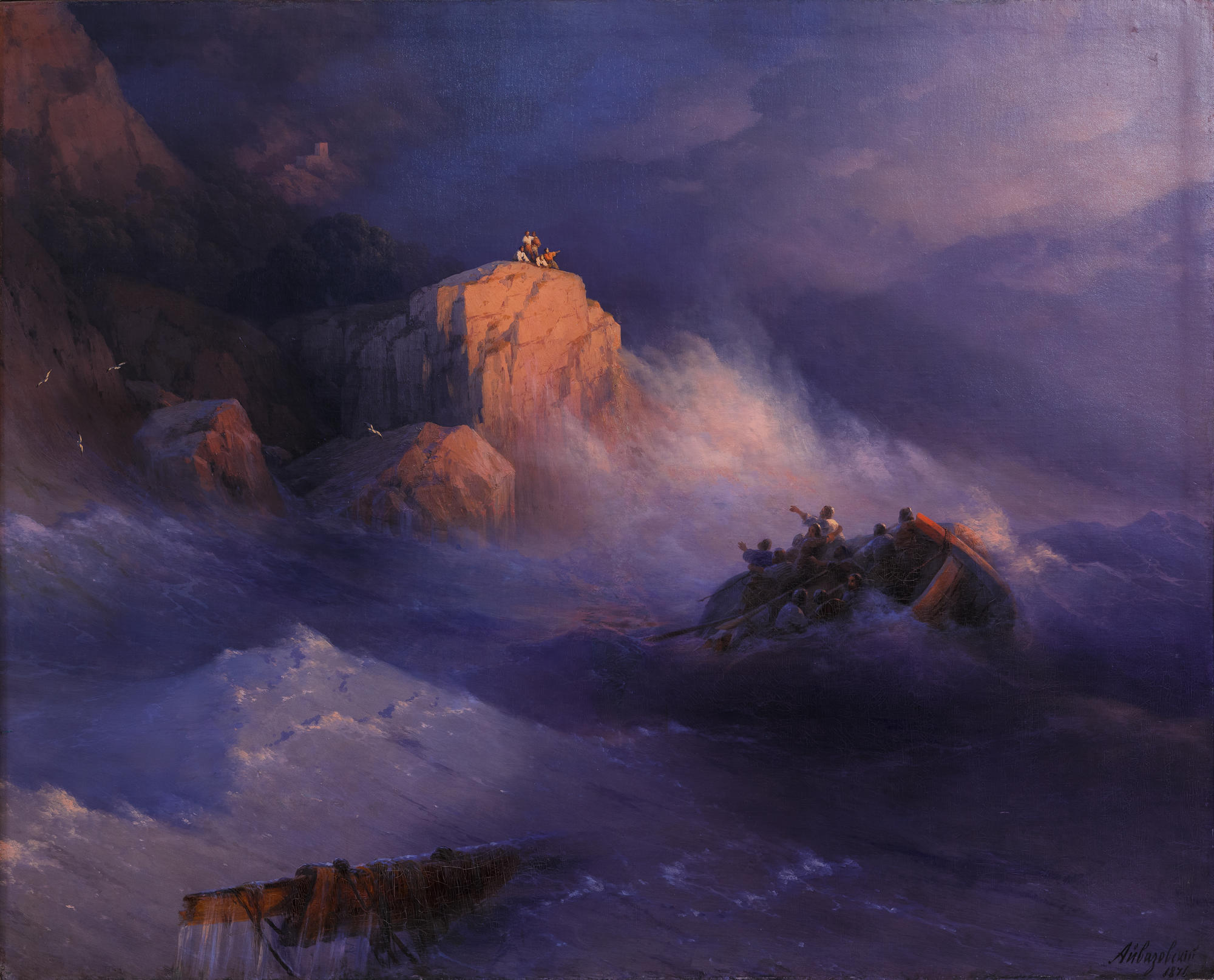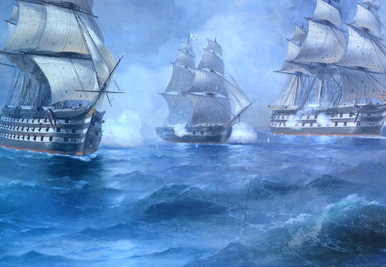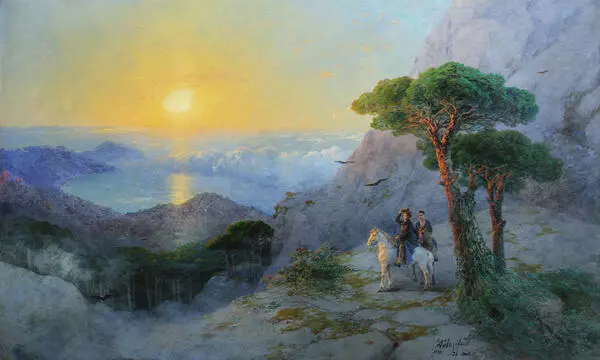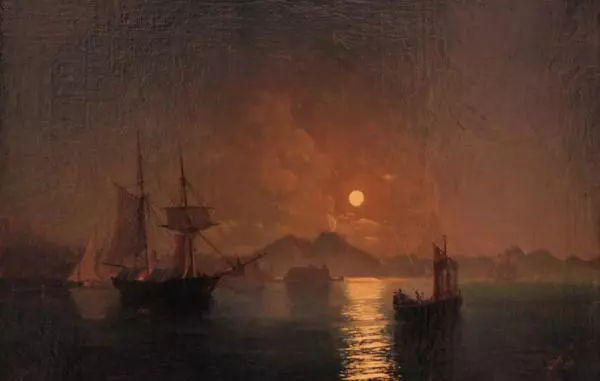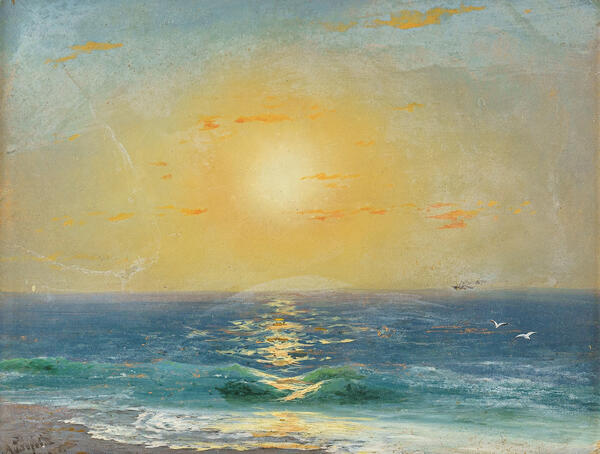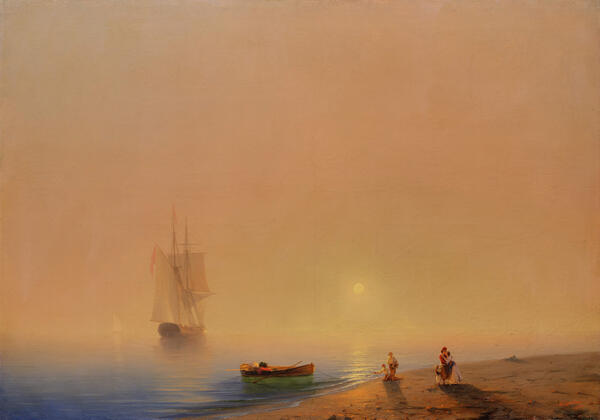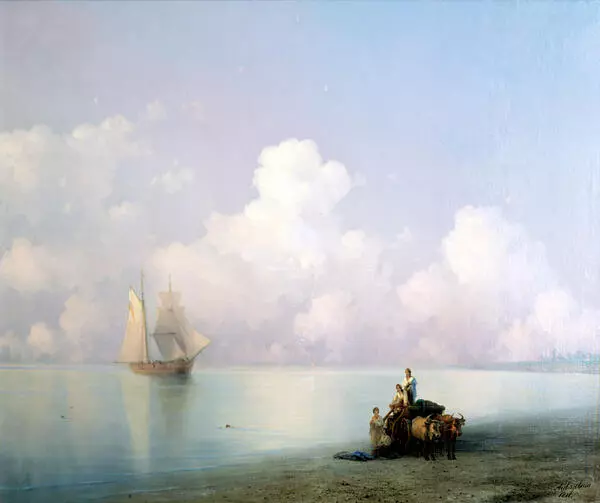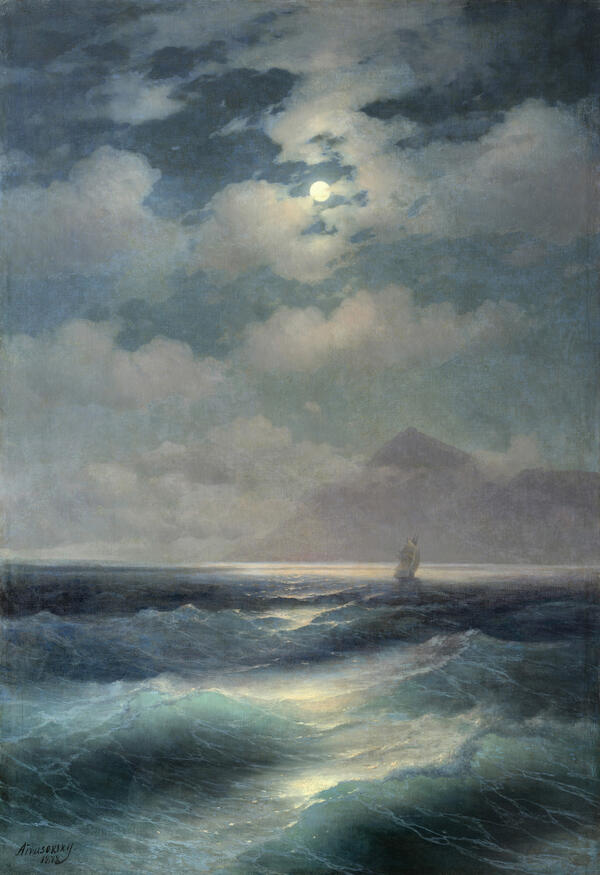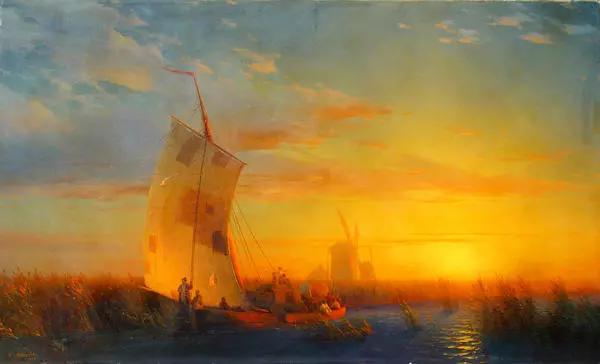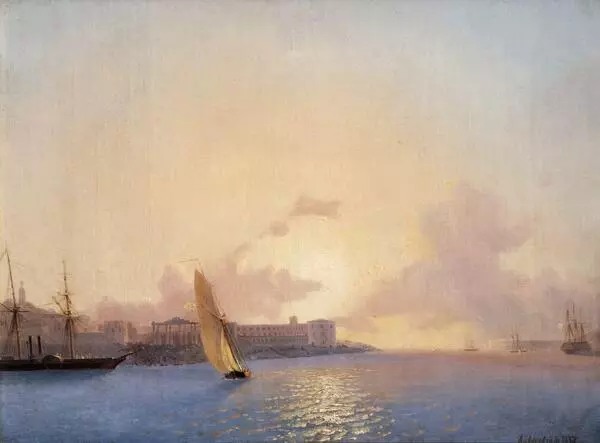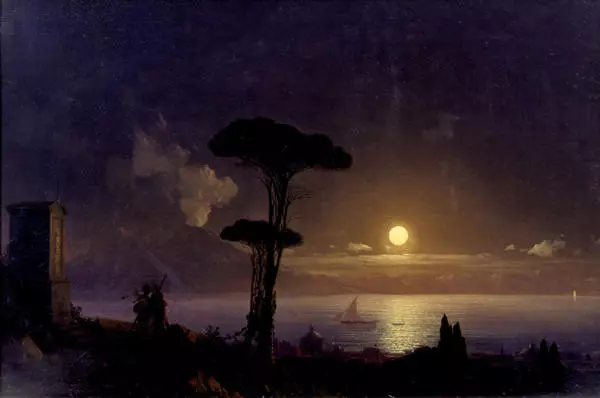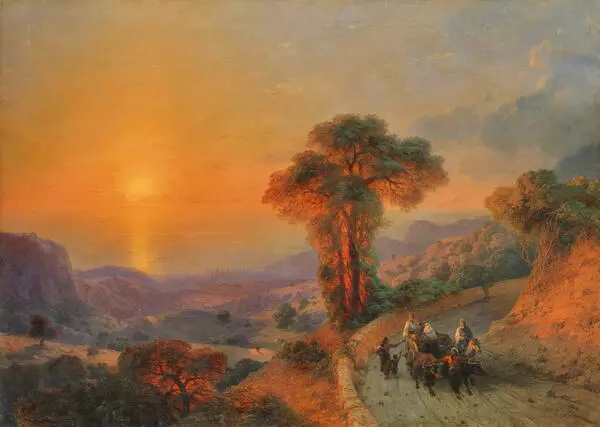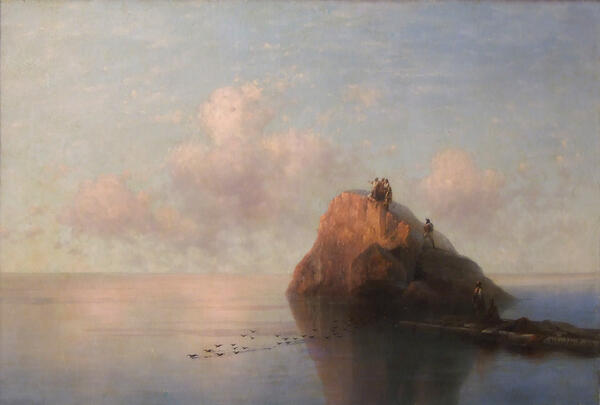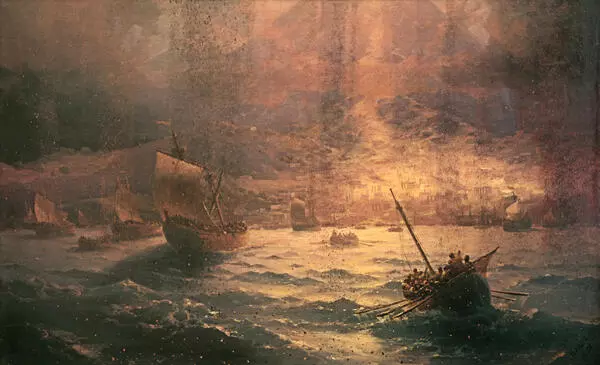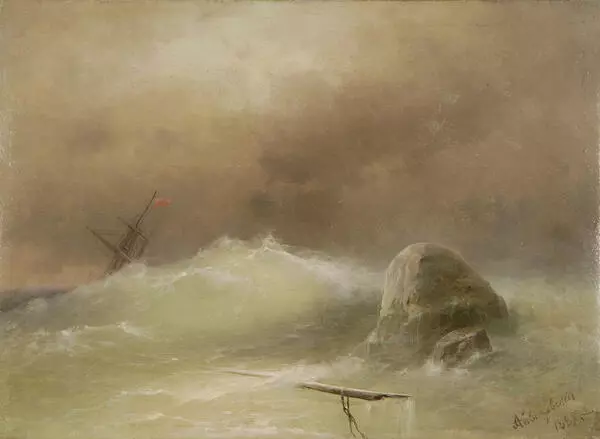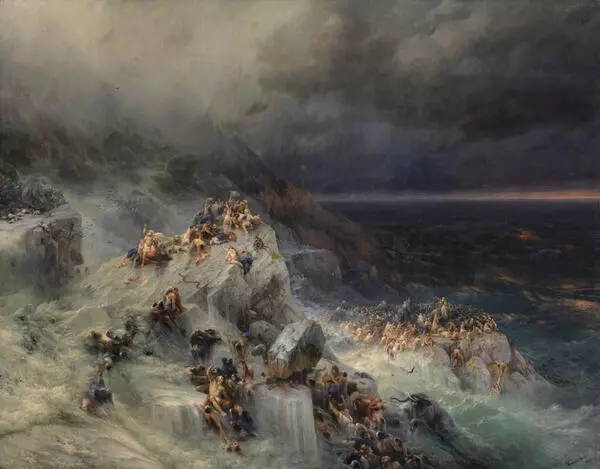Most of all, Ivan Aivazovsky liked to paint a stormy sea. The artist was not afraid of filling his pictures with dramatic content; on the contrary, throughout his life he was attracted by gloomy rocky coasts and high waves that brought nothing but destruction. Aivazovsky thought that a man’s encounter with the sea could serve as a metaphorical expression of fate, and, therefore, most of his pictures dedicated to shipwrecks were filled with deep philosophical meaning. Experts on Aivazovsky’s art works calculated that out of six thousand pictures painted by the artist, four thousand were related to a stormy sea.
One of the first Shipwrecks was painted by the artist in Italy in 1843. In this picture, one could feel Aivazovsky’s passion for romanticism, but at the same time, in terms of colour, it was close to the old masters’ art works studied by the young painter abroad. For the first time, the artist depicted a terrible storm that was spreading apart a wrecked ship, and people facing furious waves. Subsequently, this imagery will often be found in Aivazovsky’s art works.
The 1870s were quite fruitful for the artist. He worked hard and often addressed his favorite subjects. For example, during this period he painted a spectacular northern landscape, Ice mountains (1870), a chamber and calm picture, Nice (1875), and a colourful picture, The arrival of Russian army in Feodosia (1871), to celebrate the 100th anniversary of the first arrival of the Russian fleet in Feodosia.
The Shipwreck painted by Aivazovsky in 1876 depicted another terrible storm that erupted before sunset. A bright evening sky painted water with ominous pinkish-purple colour. In the foreground, high waves were tossing a boat with a group of sailors onto the rocks. In this picture, Aivazovsky used many tones from light pink in the sky to deep blue in the wild waves. Thus, the artist tried to give a sense of anxiety that corresponded to the internal structure of the picture. The master depicted waves breaking over the rocks and the sailors in distress. But the artist could not help but leave his characters a chance for rescue. In the background, we can see a ray of light that breaks through the clouds. In Aivazovsky’s imaginary world this ray symbolizes hope.
